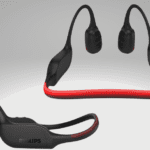By Nathan Beckord
Don’t make the mistake of pitching to investors who don’t “get it.”
Sometimes a company comes along with an idea that seems so obvious in hindsight (Oh, of course—that makes sense!) that it’s almost surprising to learn its product hasn’t been the industry standard for years. Product management platform Productboard is one of those companies.
After raising more than $260 million with a total valuation of $1.725 billion, it’s clear that investors see Productboard’s value. But that wasn’t always the case. Cofounder Hubert Palan tells me that early on, he made the mistake of pitching investors who just didn’t “get it.”
He spent quite a bit of time trying to persuade VCs with no product background that there was a market for a platform similar to Jira or Salesforce designed specifically for product managers. Platforms like Jira are essential to the task management process of developing apps and web features, like coding, testing, and other aspects of engineering delivery.
“But product management is not project management,” says Hubert. “It is about understanding who the customers are and the pain points they have.”
Before Productboard, there was no end-to-end platform for the entire product management lifecycle. Product teams often relied on a patchwork of spreadsheets and workarounds to incorporate things like customer, design, and manager feedback into their processes. A better product management system assures that startups can “de-risk the whole delivery process,” Hubert adds. “And end up building the right things … not waste years of our lives building stuff that nobody needs.”
Rest assured, that’s not Productboard. Here Hubert shares his top tips for raising capital, whether or not you’re the next startup unicorn.
How to raise capital for your startup
1. When raising capital, know what you really need
Productboard wasn’t an overnight success. Hubert and his cofounder, Daniel Hejl, founded the company in 2014, but didn’t debut the platform until TechCrunch’s Disrupt Startup Battlefield in September 2016.
And the road to unicorn status is paved with quite a few rounds of fundraising. Most founders I speak to haven’t gotten quite as far as a Series D—or raised $260 million. “It is a big number,” says Hubert. “But for me, the absolute number is almost irrelevant, because it’s like, What is the opportunity?”
The opportunity, of course, is massive. The product management space is broad and Productboard is quickly becoming essential to companies large and small, especially those with distributed teams. That’s why Silicon Valley was very interested once Hubert and Daniel found VCs who understood Productboard’s value: Dragoneer Investment Group and Tiger Global led the Series D, while previous rounds included funding from Bessemer Venture Partners, Sequoia Capital, Kleiner Perkins, Index Ventures, and Credo Ventures.
Hubert says that whether you’re raising a Series A or D, the basic concepts of fundraising are the same. You should ask yourself questions about what you really need: Mostly cash? A great board member with experience in a specific market or a specific skill set? Someone who can help you attract the best talent to build out your team?
“Optimize for your goals,” he says. “Clearly spell it out.”
By the time Hubert and Daniel raised the Series D last year, Productboard needed capital that would allow the company to scale. It had already grown to about 400 employees (there are 500+ today) serving more than 6,000 customers, including household names like Disney and Volkswagen, big startups like Zoom, legacy institutions like JPMorgan Chase and “many, many small customers.”
2. #IYKYK: Find investors who understand your value
Before Productboard became the hottest tech startup in Silicon Valley (as well as the Czech Republic, where Hubert and Daniel built their initial engineering team), it found a champion in Ilya Fushman, a former partner at Index Ventures and former head of product at Dropbox.
Ilya was one of the first VCs who, because he shared a background as a product manager, “understood the pain point,” Hubert recalls. “I didn’t have to explain to him what product management was about. Zero time spent on that—it was much more about like, How are you going to solve it? What proof points do you have?”
With Ilya’s support, Index Ventures co-led Productboard’s $1.3 million 2016 seed round (with Credo Ventures and participation from Spread Capital).
Lesson learned? Don’t waste time trying to educate investors who don’t understand the problem your startup solves. “There are people who invest in the space who understand the problem. Find those people,” Hubert says. “You want to go the easiest route, the fastest route.”
That’s why it’s critical to research and identify your ideal investors. Hubert took a “segmentation” approach to this step, creating a spreadsheet that listed the characteristics of each firm, its partners, its reputation, and even its logo. He noted whether a firm or VC had previously invested in a similar space. But he cautions founders to beware of anyone who might have invested in a competitor. Reputable investors will quickly exclude themselves from making a deal that represents a conflict of interest.
More articles from AllBusiness.com:
3. Gather momentum among venture capital investors
When raising later rounds, Hubert asked his investor, senior advisors and mentors to review that spreadsheet with him. He asked them to rank those firms, so to speak, based on how well they knew them, whether they had partnered with them before, and how good of a fit they were for Productboard.
“Later on, I had some inbound interest because we were known already,” Hubert says. But before he started getting approached, Hubert asked his network—professors at the University of California, Berkeley, where he earned his MBA, and friends in the industry—for introductions. He often wouldn’t provide any digital information prior to initial conversations with investors: “I would just show up and talk to them about what we do, without any deck . . . just paint the vision.” That allowed him to gauge interest and compatibility without spending time on a formal pitch.
Each round became easier and easier. After Kleiner Perkins led Productboard’s Series A investment in 2018, the startup became a known entity in the VC community. Sequoia and Bessemer agreed to share its Series B round after fundraising became what Hubert tactfully calls a “very competitive situation.” Representatives from a team of interested investors “showed up in our hallway and said, ‘We’re not leaving until you sign our term sheet.’ They literally did leave for the night, but they were there back again at 6 a.m. the next day.”
(Readers: If you walked into the offices of a venture fund and told them you wouldn’t leave until you got a term sheet, you’d probably get arrested. But I guess it’s cute when VCs do it.)
4. Build a dream team—and steer clear of the jerks
A startup is only as strong as its team, and Hubert emphasizes the importance of hiring great people.
“Take time to back channel people and learn about who they are,” he says. He recommends asking investors to introduce you to potential team members in addition to fellow VCs. They might provide an intro to someone who has “been through a rough patch” that proved their mettle, or even people from a company that went bankrupt—“investments that didn’t work out,” Hubert adds. “The best investors will happily introduce you.”
They might even be a CEO who was fired by the investor, he notes.
“But was it for the right reasons? Was the investor reasonable and empathetic about the situation? The job of the investors is to protect the investments and do the best thing for the company, which might be to fire the CEO or founder . . . But if you’re being militant, unfriendly, an ignorant, no-empathy type of person . . . that tells you something,” he says.
“And I did find people like that even amongst the top firms, I did dig out stories and was like, ‘Well, I really don’t want to work with that person,” he adds.
Basically, investors are people too, with interpersonal disagreements and opinions you might disagree with. “Your ability to sort out these differences and opinions is critical,” says Hubert, who advises founders to choose their partners wisely—and work to nurture those relationships.
“Sometimes people raise the money and then they see the investors once during the board meetings,” he says.
Hubert recommends instead, “Get to a texting basis. Involve them even in things [even if] you don’t really need the input . . . just bringing them there with the intention to build the relationship. Especially now in this crazy, ‘distributed’ world—how much time are you actually spending together? You need to engineer it. But it pays off. Because then when things get tough, when you really need deep advice . . . you know them and you can rely on them. It’s all a matter of trust.”
Article is based on an interview between Nathan Beckord and Hubert Palan on an episode of the How I Raised It podcast.
About the Author
Nathan Beckord is the CEO of Foundersuite.com, which makes software for raising capital. Foundersuite has helped entrepreneurs raise over $9.7 billion in seed and venture capital since 2016.






